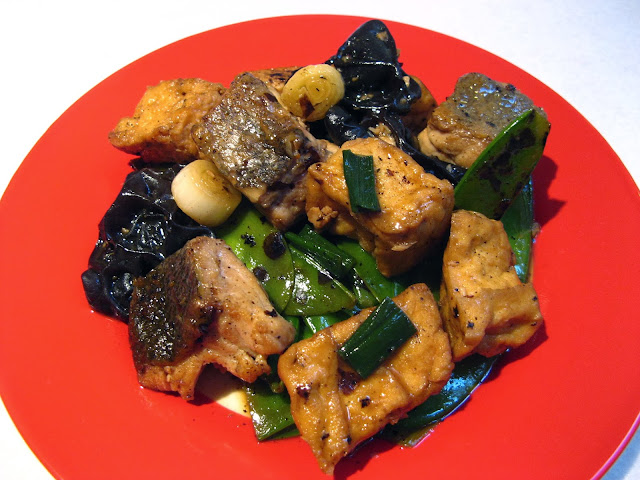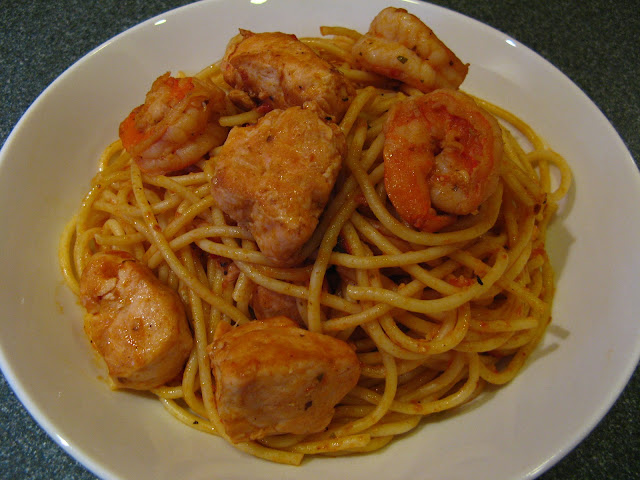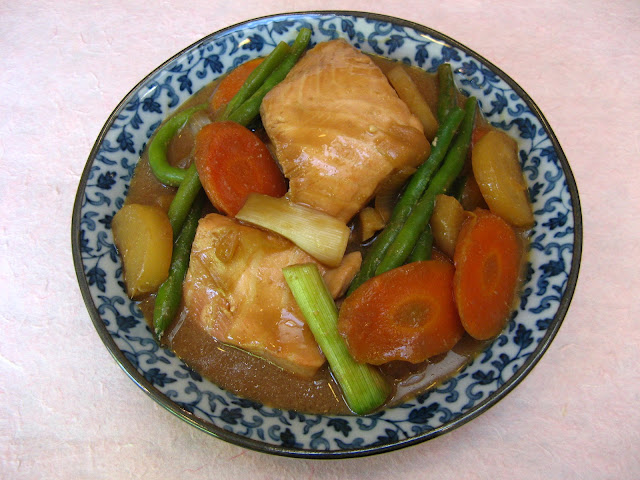Here’s another tasty recipe using fresh sockeye salmon and Lee
Kum Kee’s brand abalone sauce. The last recipe fresh sockeye salmon recipe, Black
Pepper Sauce Sockeye Salmon (黑椒汁紅鱒鮭魚,
Hak1 Ziu1 Zap1 Hung4 Zyun6
Gwai1 Jyu4), used black pepper sauce. The texture to
this dish is provided by using bean curd sticks, which when rehydrated, are
slightly chewy. Once again, the salmon skin is not removed and becomes crispy
when the skin is placed directly onto a hot wok.
Enjoy!


















